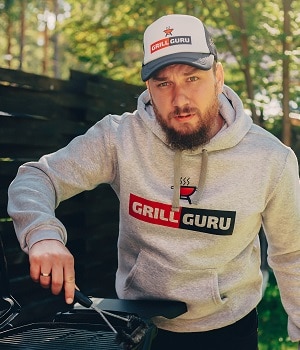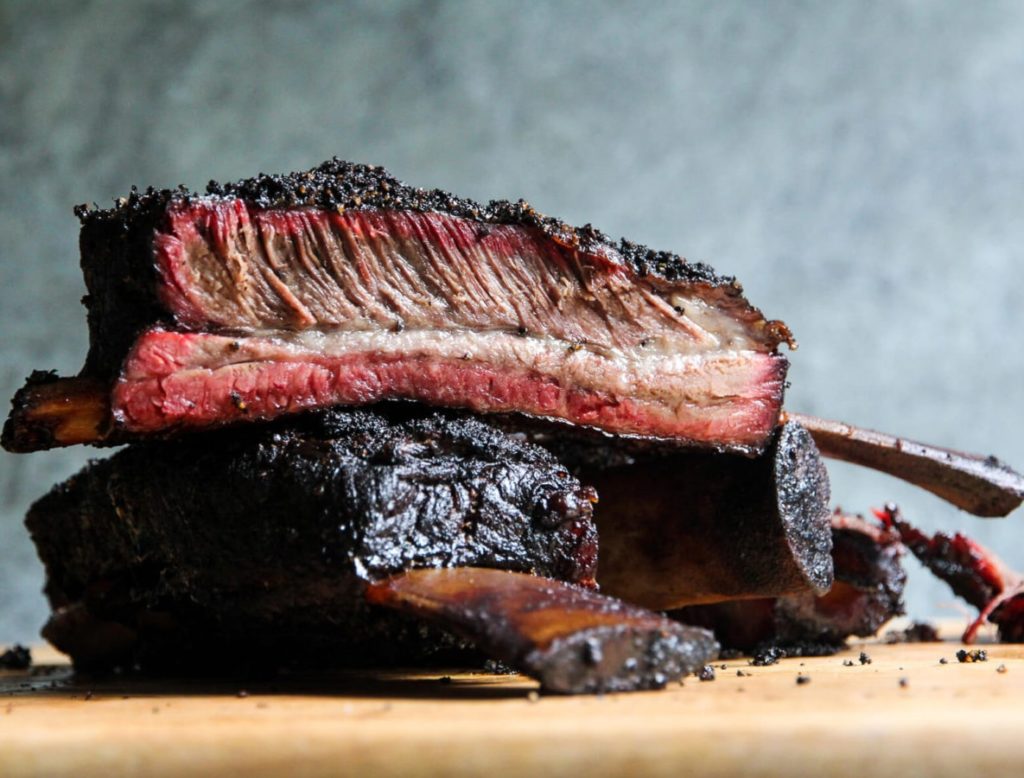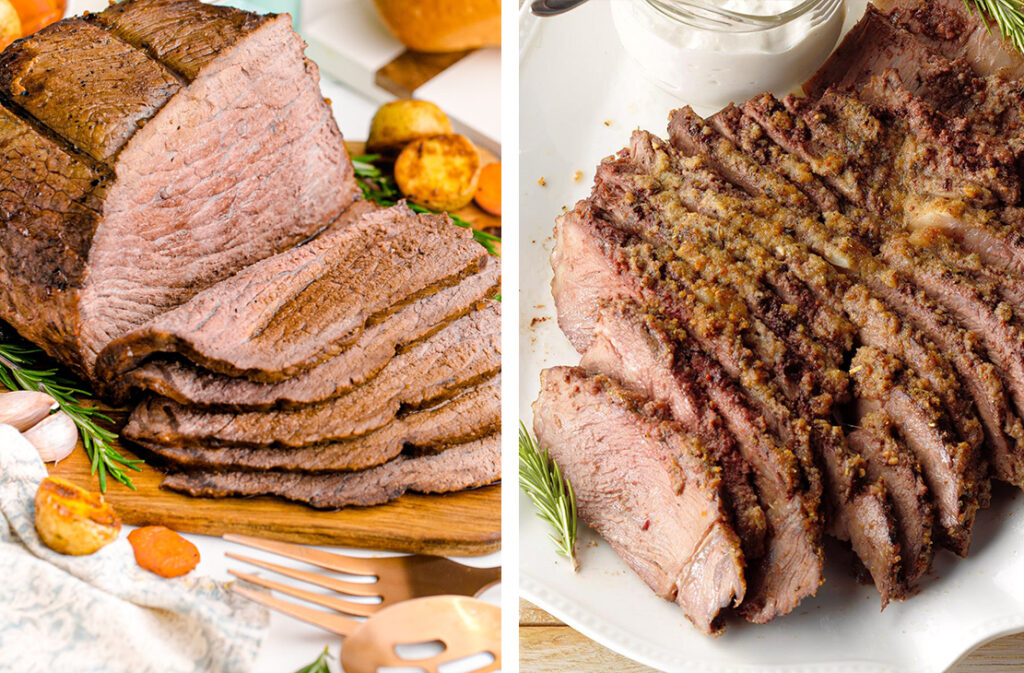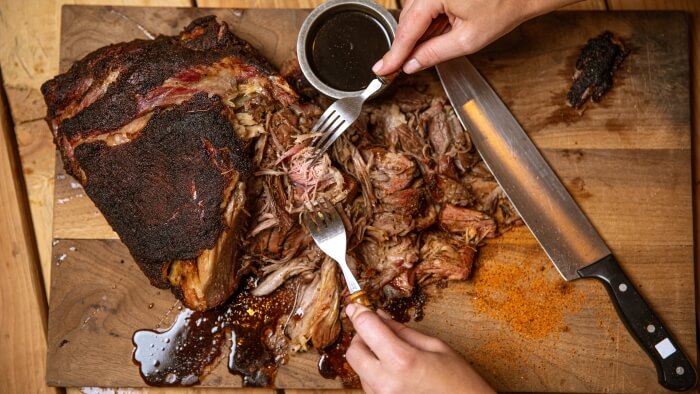

Few things test your patience more than cooking a brisket. After all, the cooking time can easily exceed 14 hours, depending on the size of the beef. After all that, most people will want nothing but to dig into the meat straight away. However, there is a requirement to let it rest for a while, and this step is necessary, especially if you want your long wait and cooking process to be worth it.
If you’re new to cooking brisket, you’re likely wondering how long to let brisket rest and why it’s necessary in the first place. You can find answers and more useful information on the same in the sections below.
Resting the brisket is crucial and will be included in any recipe you encounter. If you’re still wondering how long to let brisket rest after smoking or grilling, the recommended rest duration is at least an hour. Notably, there are multiple reasons for this. One is a phenomenon known as carryover cooking. This refers to the tendency of internal meat temperatures to keep rising even after the meat has been taken out of the smoker or grill.
The ideal doneness level for brisket is an internal temperature of 202 degrees Fahrenheit. On the other hand, carryover cooking will raise the internal temperature by between 5-10 degrees Fahrenheit. As such, most recipes will account for this difference by recommending you take the meat out when it reaches 195 degrees. If you don’t follow the instructions, there is a genuine chance the meat will be overcooked.
To ensure you get the right internal temperature use a specialized solution like the ThermoPro TP20 meat thermometer. Our experts recommend the thermometer because it has an inbuilt alert system that can notify you once the ideal temperature is reached.
Another reason for the resting period is the retention of juices and moisture. For lean cuts of meat that contain muscles like the brisket, the meat can be tough, dry, and almost impossible to eat if cooked to temperatures above 170 degrees. This is due to moisture loss. As we mentioned above, brisket is cooked to 202 degrees which is well above this cut-off point. Resting the meat is one way to counter the dryness that makes the meat challenging to eat.
Notably, a raw brisket is 71% water, and you want to retain as much of this moisture as possible. Unfortunately, the brisket meat also consists of a lot of muscles. Consequently, during the cooking process, the heat from the grill or smoker will cause these muscles to contract therefore pushing the moisture to the surface of the meat while the interior is left dry.
If you were to jump the gun and take a knife to the meat as soon as you take it out of the propane smoker, gas grill, or oven, two things would happen. One, this moisture will drip onto the tray, platter, or cutting board that you’re using, and two, some of the moisture will evaporate, causing the meat to cool faster. Consequently, a bite into the meat will reveal the toughness and dryness that we mentioned earlier.
Studies on the same have revealed that you can lose as much as 10 tablespoons of liquid if you cut the meat immediately. On the other hand, if you let it rest, the liquids will be redistributed all over the brisket so that none of the components are dry. Furthermore, since the meat is cooler, you won’t lose as much moisture to evaporation.
The heat from cooking also dissolves the collagen proteins in the meat. These proteins mix with the liquids that are redistributing throughout the meat and act as thickening agents. Consequently, the longer your brisket is allowed to rest, the thicker the liquids will be. Furthermore, thicker juices don’t flow out of the meat as easily as thinner ones.
Since the ideal brisket temperature is 202 degrees Fahrenheit, ensure you remove the meat as soon as the internal temperatures reach 195 degrees. After that, remove the butcher paper or foil if they were part of your recipe and place the meat on a cutting board. Alternatively, you can use a platter. After that, you leave it be for at least an hour.
Notably, the longer you can leave it to rest, the better. However, that only applies until the two-hour mark.
However, as a pitmaster, sometimes it’s necessary to cook the meat ahead of time. As such, the option to rest the meat for between 1-2 hours may not be available to you. That said, there are other ways to tackle this issue. For instance, if you’re confident the wait time is just over two hours, you only need to make some adjustments to your resting process.
This will involve wrapping the meat loosely in foil. Remember, air is a necessary component of resting your brisket, which is why you don’t want to wrap the beef too tightly. That said, the foil will help retain the heat inside the meat for longer.
On the other hand, you may even have a four-hour lead time between when the meat is ready and when it gets to be served. In this case, a faux cambro may be necessary. A cambro is a box meant to hold your food at about 140 degrees for extended periods. Notably, you can make your own faux cambro with a few materials at home.
First, you’ll need to boil a few gallons of water. Then you pour the hot water into a cooler and close the lid. Let it sit for about 30 minutes. If you followed a recipe and know exactly when the meat is supposed to be ready, you should add the hot water to the cooler 30 minutes prior. That way, the faux cambro will be ready by the time the meat is removed from the smoker.
When the brisket is ready, wrap it in foil and set it in an aluminum pan. Follow up by draining the hot water from the cooler. Put in your wrapped meat, close the lid, and this will help maintain some of the heat for up to four hours. That said, faux cambro is technically not resting your meat. As such, while the juices will redistribute and thicken, there are other side effects.
One example is the meat’s exterior won’t be as crisp as when the meat is left to rest. This is caused by wrapping the meat in foil, which means you’re essentially steaming the brisket for about four hours. However, some people prefer it this way, while others prefer the meat with a crispy exterior.
Notably, people also ask about skipping the resting process and instead pouring the juices that pour out of the brisket back onto the meat. On paper, this does look like a good idea, but it does have some issues. One is that the meat is too hot to eat. As such, you’ll still have to wait a while for the brisket to cool, which is time that would better have been used to rest the meat.
Secondly, while you can recover a portion of the moisture on your cutting board, you can do nothing about the evaporated moisture.
Of course, before you can determine how long to let brisket rest before slicing into it, you have to buy, trim and cook the meat. As for the cooking part, there are a couple different recipes on the same that you can get on the internet and in cookbooks. However, these recipes often leave out how to choose the best brisket and trim it before cooking. This is an information gap that we bridge in this section.
Brisket is a primal cut that is sourced from the lower chest of a bull. It can also be sourced from calves, although this option is often more expensive. The composition of the brisket includes superficial and deep pectoral muscles.
While at the butcher, the cut is divided into two parts. One is the point, and this part tends to have more fat. Consequently, when the meat is ready, this component will have a more robust beef flavor. The other part is the flat, and since it’s not as fatty as the point, it makes a better choice if your recipe involves carving the beef into thin slices.
That said, what you want to buy is a whole packer brisket with both of these components included. If the meat is graded USDA prime, then all the better because it’s guaranteed to be high quality and will even feature plenty of marbling that enhances the flavor. Extra points if you can get meat that’s free of chemicals like hormones and antibiotics.
Once it’s in your kitchen, it’s time to trim it. Use a boning knife to trim some of the fat cap. Trim the fat while the meat is cold and ensure you leave about ¼-inch of the fat still intact. However, you can leave more fat in the areas that will be exposed to more heat.
Additionally, thinner pieces of the brisket tend to overcook and dry out well before the other parts of the meat are done cooking. As such, you should trim these off as well, and you’ll be ready to start your recipe.
For the best results to your recipe, here are a few extra tips for preparation, serving, and even how to rest a brisket. Put the meat into your grill with the fat side up, so the fatty juices drip into the meat. Speaking of grills, the Weber Genesis II is, according to reviewers, one of the most reliable grills for cookouts and meat dishes, including brisket. Users and reviewers recommend it because it features a large 844 square inch cooking surface and even a mounted thermometer, so you’re constantly aware of the cooking temperatures.
Also, cook the brisket for about an hour and 15 minutes for each pound of meat. Additionally, don’t open the lid too often as you tend to lose heat, and that can lengthen the cooking process. Finally, when serving, cut the meat across the grain.
The short answer to the question, “How long to let Brisket rest?” is: at least one hour. Also, as we mentioned above, going past the two-hour point is generally a bad idea. As such, if you can stick within this time frame, you’ll likely end up delighted with the juiciness and tenderness of the brisket you make.





